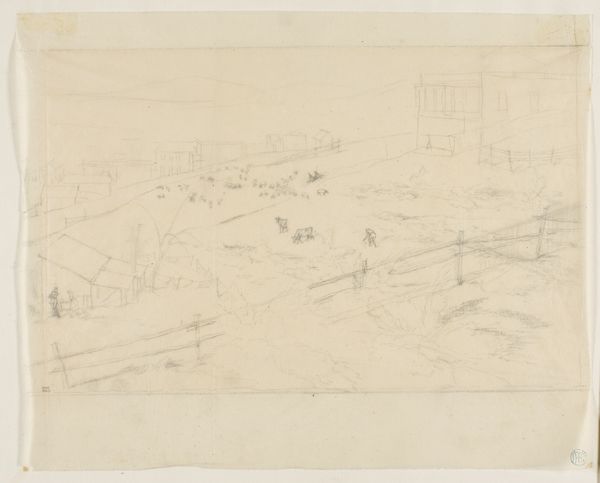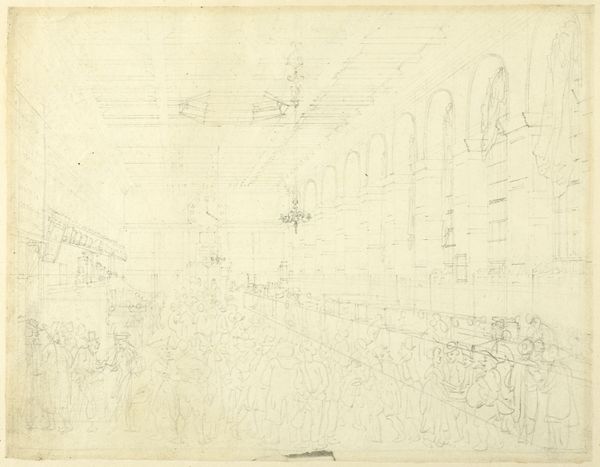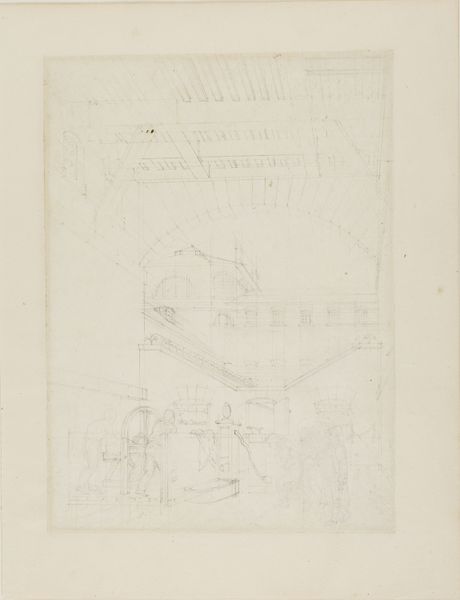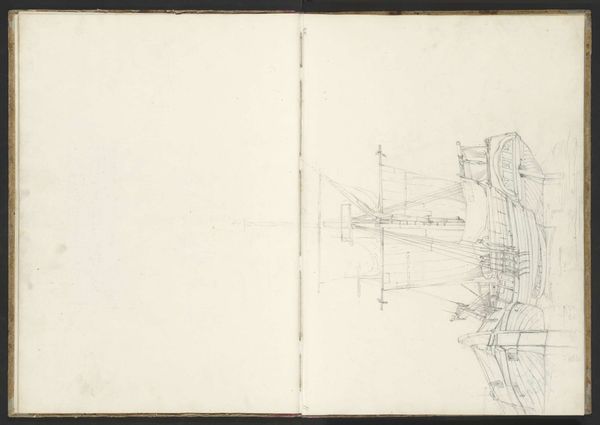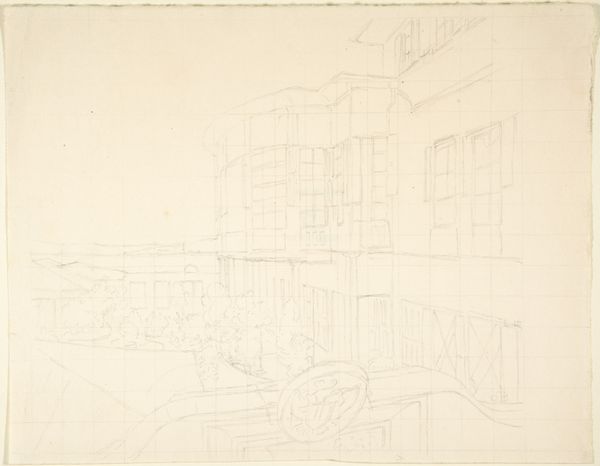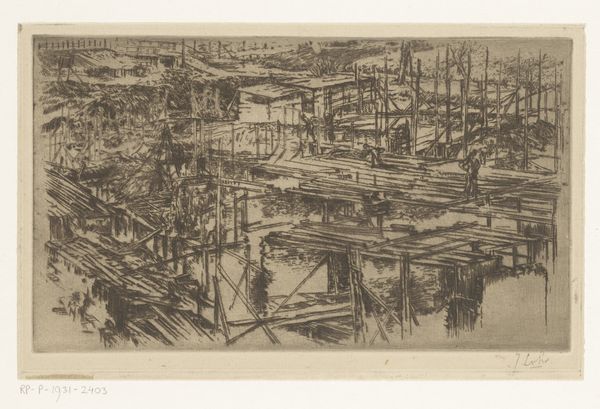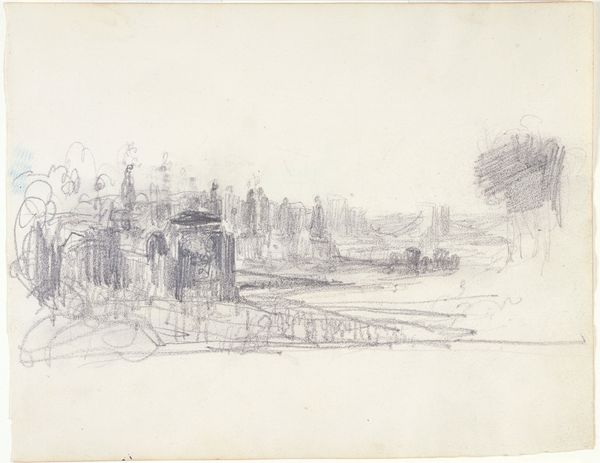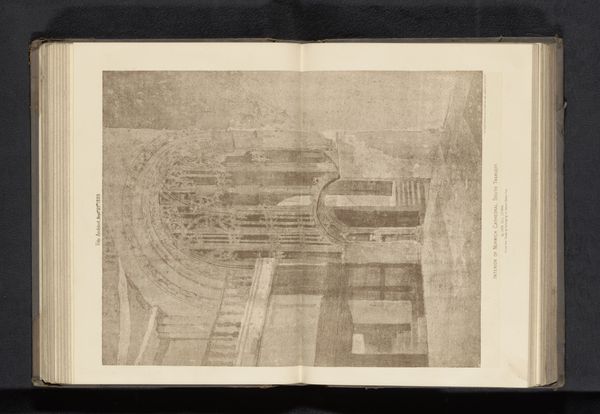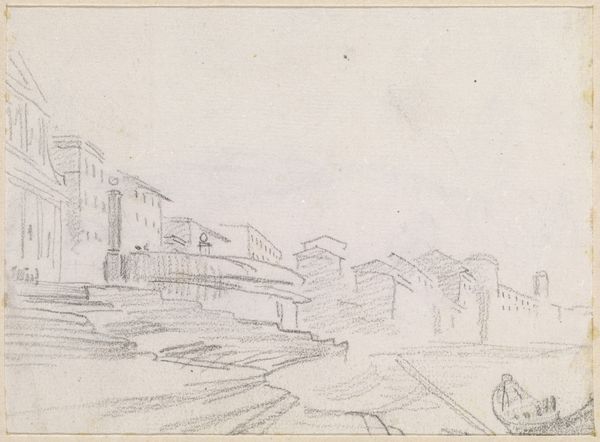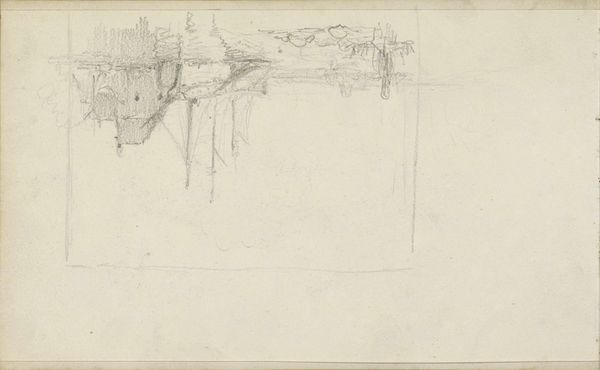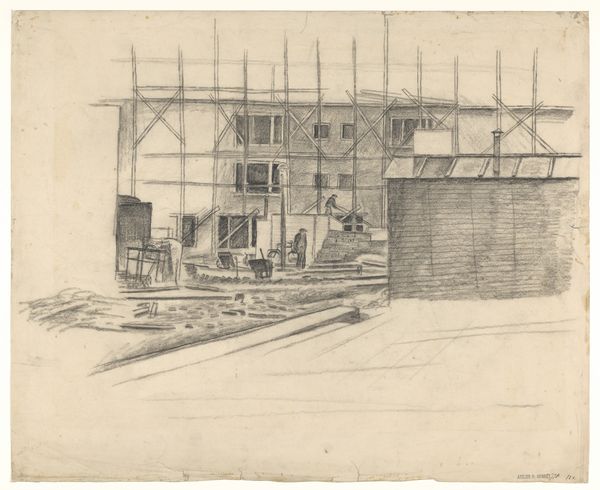
Copyright: Public Domain
Curator: Welcome. We're looking at Eugène Cicéri's "Design for a Stage Set," created between 1830 and 1890. It's a pencil and printed drawing, showcasing a cityscape and it resides here at the Metropolitan Museum of Art. Editor: Right away, it feels unfinished, doesn’t it? Almost like a ghost city shimmering on the paper. The rigid grid overlaid on the sketch makes it so that this is not merely artistic impression, it shows a precise blueprint kind of vibe. Curator: Precisely. Cicéri was very active in Romantic stage design. This shows the rigor of academic art meeting theatrical production, imagine this city on stage during Romantic productions of historical plays and ballets. Editor: I’m captivated by the texture the grid creates. It’s functional, sure, but it also adds an almost haunting quality, especially with the pencil lines so delicate. Does the grid serve another role beyond the drafting aspect? Curator: Definitely. Consider how stage design at the time mediated the experience of civic space. Theatre aimed to reconstruct history before a paying public, making even “gridded” landscapes a matter of aesthetic and cultural experience. Editor: That brings in how powerful it is to see something not fully rendered and left as an idea. Looking closer at it, it feels both planned and accidental, especially since it captures both order and imperfection at once. Curator: Absolutely. And the cityscape theme places it within broader discussions about modernity and the public role of art. These designs contributed heavily to how the audience thought of progress, of civilization itself. Editor: As an artist, I'm always struck by the boldness of showing the "bones" of the creative process. It invites you to fill in the blanks and dream along with Cicéri. That unfinished quality also shows an earnest humility of creation itself. Curator: It reminds us that every finished stage production starts with this, a complex blend of vision, technical skill, and societal expectations, meticulously rendered. A world of possible narratives. Editor: And ultimately, every artwork offers a glimpse into someone's private world of ideas made visual for public appreciation. That possibility—it’s where the magic truly resides.
Comments
No comments
Be the first to comment and join the conversation on the ultimate creative platform.
